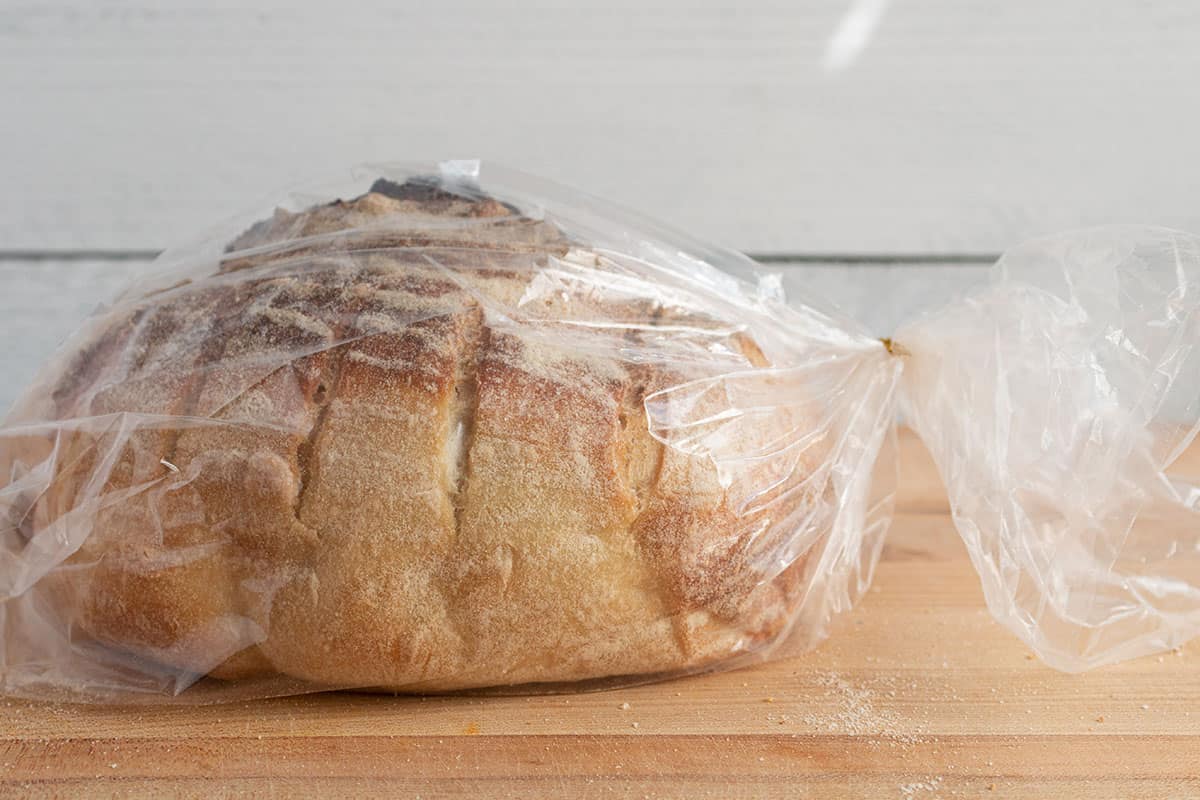

Articles
How To Store Handbags Properly
Modified: August 23, 2024
Learn the best way to store your handbags with these helpful articles. Keep your bags organized and protect them from damage with proper storage techniques.
(Many of the links in this article redirect to a specific reviewed product. Your purchase of these products through affiliate links helps to generate commission for Storables.com, at no extra cost. Learn more)
Introduction
Handbags are not just functional accessories; they are also valuable fashion investments. Whether you have a collection of designer purses or just a few favorite everyday bags, it’s important to store them properly to maintain their quality and longevity. In this article, we will explore the best practices for storing handbags to ensure they remain in pristine condition over time.
By following the tips and techniques outlined in this article, you can protect your handbags from dust, dirt, and damage, preserving their beauty and value for years to come. Let’s dive in and discover how to store handbags properly.
Key Takeaways:
- Proper storage and maintenance are essential for preserving the beauty and longevity of your handbags. Choose the right storage location, use dust covers, and avoid excessive weight to protect your collection from dust, damage, and wear.
- Regular cleaning and maintenance, including handling stains promptly and avoiding harsh chemicals, are crucial for keeping your handbags in pristine condition. By following these practices, you can ensure your handbags remain cherished pieces of your collection for years to come.
Read more: Proper Care And Storage Of Designer Handbags
Choosing the Right Storage Location
When it comes to storing your handbags, the first step is to choose the right location. Ideally, the storage area should be dry, cool, and free from direct sunlight. Excessive heat and sunlight can fade the colors and damage the material of your handbags.
Avoid storing your handbags in areas prone to moisture, such as basements or bathrooms, as it can lead to mold and mildew growth. Instead, opt for a closet or an area in your bedroom where the temperature and humidity levels are controlled.
If you have a large collection of handbags, consider dedicating a separate space or cabinet specifically for their storage. This will help keep them organized and protected from potential damage.
Additionally, make sure the storage location is away from potential hazards such as sharp objects or liquids that can accidentally come into contact with your handbags and cause damage.
By choosing the right storage location, you create a safe and suitable environment for your handbags to stay in prime condition.
Using Dust Covers
Dust is one of the main enemies of handbags as it can settle on the surface, penetrate the fabric, and cause discoloration. To protect your handbags from dust, it is essential to use dust covers.
Dust covers are typically made of soft, breathable fabric and provide a barrier between your handbags and the outside environment. They help prevent dust from settling on the surface of your bags, keeping them clean and dust-free.
Before placing your handbag inside a dust cover, make sure it is clean and dry. Remove any small items or loose particles that might be inside the bag. Once the bag is prepared, gently slide it into the dust cover and secure it by closing the drawstring or zipper.
It is best to store each handbag in its own dust cover to avoid any potential scratching or color transfer from other bags. If your handbags came with their original dust covers, use them as they are specifically designed to fit the dimensions of the bag.
If you have multiple handbags stored in a cabinet or shelf, assign a separate dust cover for each bag and label them for easy identification. This will help maintain order and minimize the risk of accidentally grabbing the wrong bag or causing damage when retrieving a specific handbag.
Remember to periodically wash or replace the dust covers to keep them clean and free from any accumulated dust or dirt that may transfer onto your handbags over time.
Using dust covers is a simple yet effective way to protect your handbags from dust and maintain their pristine condition.
Stuffing Handbags
Properly stuffing your handbags when they are not in use is another important step in maintaining their shape and structure. Over time, handbags may lose their shape and become slouchy or misshapen if not stored correctly.
When stuffing your handbags, start by removing any loose items or debris from the inside. Then, gently fill the bag with stuffing material such as tissue paper, bubble wrap, or soft fabric. Avoid using materials that could potentially scratch or damage the interior of the bag.
Be mindful not to overstuff the handbag as it can put unnecessary pressure on the seams and hardware, causing them to become strained or even break. The goal is to provide enough support to help the bag maintain its shape, but not to compress it excessively.
Pay special attention to delicate or structured handbags to ensure they retain their intended shape. For structured bags, consider using custom-made bag inserts or shape retainers to help preserve their structure while in storage.
Additionally, if your handbag has any detachable straps or handles, it is recommended to remove and store them separately to prevent any strain on the bag or potential damage.
By properly stuffing your handbags, you help maintain their original shape, preventing them from becoming misshapen over time.
Hanging Handbags
For handbags made of soft, flexible materials such as leather or fabric, hanging them is a convenient and space-saving storage option. Hanging your handbags helps prevent them from getting crushed or flattened, allowing them to maintain their shape and structure.
When hanging your handbags, it is important to use sturdy hooks or hangers specifically designed for holding bags. Avoid using thin or flimsy hangers that could potentially cause damage or deformation to the straps or handles.
Make sure to hang your handbags in a well-ventilated area, away from direct sunlight or excessive heat. This will help prevent any fading or discoloration of the bag’s material.
Before hanging your handbag, ensure it is empty and free from any loose items or clutter. Stuff the bag with tissue paper or soft fabric to help it retain its shape while hanging.
If possible, try to maintain a gap between each handbag to prevent them from rubbing against each other. This will reduce the risk of color transfer, scratches, or any other type of damage that may occur when bags come into contact with each other.
It is important to note that not all handbags are suitable for hanging. Structured or rigid bags, such as those with metal frames or stiff construction, are better stored in other ways to avoid excessive strain or damage to the bag’s structure.
By hanging your handbags, you not only save storage space but also ensure they retain their shape and are easily accessible when needed.
Store handbags properly by stuffing them with acid-free tissue paper to help them maintain their shape. Then, place them in a dust bag or pillowcase to protect them from dust and light. Avoid hanging them for long periods to prevent stretching.
Read more: How To Store Handbags In Closet
Storing Handbags in Shelves or Cubbies
If you have shelf space or cubbies available, they can be an ideal storage solution for your handbag collection. Storing handbags in shelves or cubbies allows you to neatly display and organize your bags while keeping them easily accessible.
Before placing your handbags on the shelves or in cubbies, it is important to clean and prepare the storage area. Wipe down the shelves or cubbies to remove any dust or debris that could potentially transfer onto your bags.
When arranging your handbags, place them side by side in an upright position. This will help maintain their shape and prevent any slouching or creasing. If possible, avoid stacking handbags on top of each other, as this can lead to unnecessary pressure and distortion.
If your shelves or cubbies are adjustable, you can customize the height to accommodate the size of your handbags. This will ensure that each bag has enough space to be stored without being cramped or squeezed tightly.
Consider using shelf dividers or fabric organizers to separate and categorize your handbags by style, color, or occasion. This will not only make it easier to find the bag you want but will also help prevent any potential damage that can occur from bags rubbing against each other.
If you have handbags with delicate embellishments or hardware, it is advisable to store them in individual dust bags or fabric pouches to protect them from scratching or damage.
Finally, remember to periodically dust and clean the shelves or cubbies to keep them tidy and free from dust or dirt accumulation.
Storing handbags in shelves or cubbies allows you to showcase and organize your collection while ensuring they remain in optimal condition.
Avoiding Excessive Weight
When it comes to storing handbags, it’s essential to consider the weight placed on them. Excessive weight can cause strain on the handles, straps, and overall structure of the bag, leading to damage or deformation.
Avoid overloading your handbags with unnecessary items such as heavy books, water bottles, or other bulky objects. These items not only add weight to the bag but can also create pressure points that can weaken the bag’s structure over time.
If you need to store handbags with heavy hardware or embellishments, it is advisable to support them by inserting tissue paper or bubble wrap inside to help distribute the weight evenly.
When storing multiple handbags in the same location, ensure that the weight is evenly distributed. Avoid stacking too many bags on top of each other, as it can cause unnecessary strain on the bottom bags. Instead, consider using shelf dividers or organizing them side by side to prevent excess weight from bearing down on one bag.
Additionally, be mindful of the storage containers or shelves you use. Make sure they are sturdy and can adequately support the weight of your handbags. Fragile or weak storage solutions may collapse under the weight, leading to damage to both the bags and the storage unit.
By avoiding excessive weight, you can prolong the lifespan of your handbags and prevent any structural damage that may occur from undue pressure.
Cleaning and Maintaining Handbags
To keep your handbags looking their best, regular cleaning and maintenance are essential. Here are some tips to help you maintain the beauty and longevity of your bags:
1. Follow Manufacturer’s Instructions: Before cleaning your handbag, always refer to the manufacturer’s cleaning instructions. Different materials require specific care, and using the wrong cleaning method can cause damage.
2. Handle Stains Immediately: If your handbag gets stained, address it promptly. Use a clean cloth or sponge and a mild, gentle cleanser specifically formulated for the bag’s material. Test the cleanser on a small, inconspicuous area first to ensure it doesn’t discolor or damage the bag.
3. Regularly Remove Dirt and Dust: Dust and dirt can accumulate on the surface of your handbag over time. Use a soft brush or a microfiber cloth to gently remove any loose particles. Avoid scrubbing or rubbing vigorously, as it can damage the material.
4. Beware of Harsh Chemicals: Avoid using harsh chemicals, solvents, or bleach on your handbags, as they can cause discoloration or damage the material. Stick to mild, non-abrasive cleaners or consult a professional leather cleaner for specific recommendations.
5. Store in a Cool, Dry Place: Proper storage is crucial for maintaining handbags. Keep them away from direct sunlight or excessive heat, as it can fade colors and damage the material. A cool, dry place with controlled temperature and humidity levels is optimal.
6. Rotate Your Handbags: To prevent any undue stress or wear on particular bags, consider rotating the ones you use regularly. This allows the less frequently used bags to have a break and helps distribute the wear evenly among your collection.
7. Use Leather Conditioner: If you have leather handbags, apply a high-quality leather conditioner periodically to keep the leather supple and moisturized. This helps prevent drying, cracking, and stiffness over time.
8. Handle with Care: When using or placing your handbags, handle them with care. Avoid placing them on rough surfaces or dragging them against sharp objects. Be mindful of where you set them down to prevent unnecessary scratches or damage.
9. Avoid Excessive Moisture: Moisture can be damaging to handbags, especially those made of suede or fabric materials. If your bag gets wet, gently pat it dry with a clean cloth and allow it to air dry naturally. Avoid using heat sources to speed up the drying process, as it can shrink or warp the material.
10. Professional Cleaning: For valuable, delicate, or heavily soiled handbags, consider professional cleaning. A professional cleaner who specializes in handbags will have the expertise to clean and restore your bags without causing damage.
By following these cleaning and maintenance tips, you can keep your handbags looking their best and extend their lifespan.
Conclusion
Properly storing and maintaining your handbag collection is crucial to ensure their longevity and preserve their pristine condition. By implementing the tips and techniques outlined in this article, you can protect your handbags from dust, damage, and wear over time.
Choosing the right storage location, such as a dry, cool area away from direct sunlight, sets the foundation for proper storage. Using dust covers helps shield your handbags from dust and dirt, while stuffing them with care helps maintain their shape and structure.
Depending on the type of handbag and available space, you can choose to hang them, store them in shelves or cubbies, or use a combination of methods. Just remember to avoid excessive weight and evenly distribute the bags to prevent unnecessary strain.
In addition to storage, regular cleaning and maintenance play a vital role in preserving the beauty and longevity of your handbags. Follow manufacturer’s instructions, handle stains promptly, and regularly remove dirt and dust. Be cautious of using harsh chemicals and protect the bags from excessive moisture.
By taking the time to clean, maintain, and store your handbags properly, you are investing in their longevity and ensuring that they continue to be cherished pieces of your collection. Not only will your handbags remain in pristine condition, but they will also bring joy and style to your outfits for years to come.
So, whether you have a few treasured designer handbags or a growing collection of everyday favorites, by adopting these storage and maintenance practices, you can enjoy your handbags for many seasons and pass them down as cherished heirlooms.
Frequently Asked Questions about How To Store Handbags Properly
Was this page helpful?
At Storables.com, we guarantee accurate and reliable information. Our content, validated by Expert Board Contributors, is crafted following stringent Editorial Policies. We're committed to providing you with well-researched, expert-backed insights for all your informational needs.















0 thoughts on “How To Store Handbags Properly”